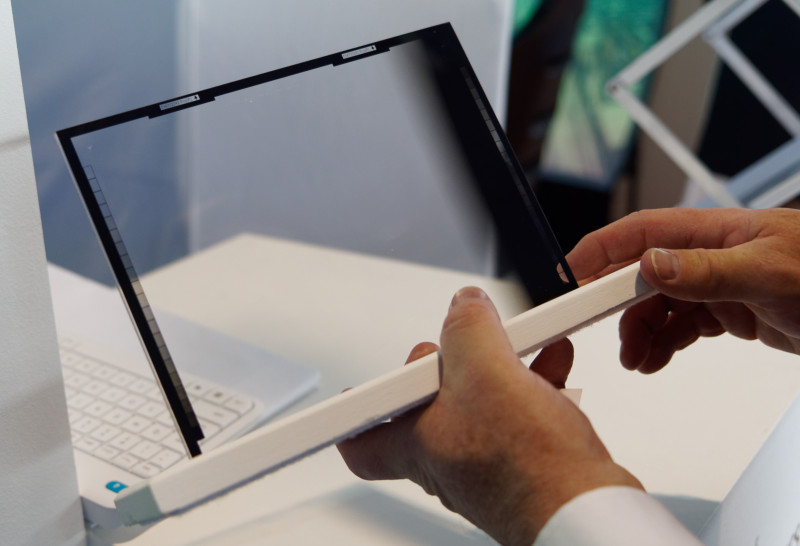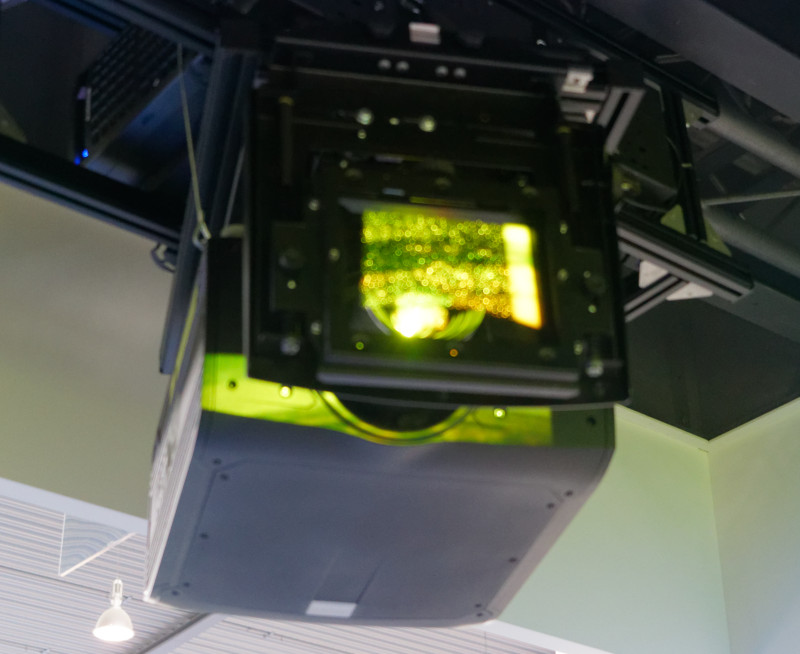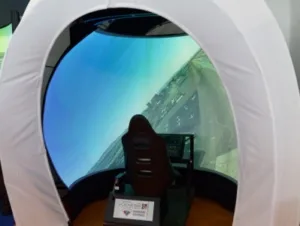Esterline was at the show and had a sample of its full range of offerings which go right up to full simulators that cost $1.5 million.
 Esterline’s Noctis optical blender works with visible & infrared light. Image:Meko
Esterline’s Noctis optical blender works with visible & infrared light. Image:Meko
The first product that we looked at was the Noctis, which is an optical blending technology that the company has developed in house and is based on technology which can maintain its performance over a long period compared to other film-based solutions which, the company told us, can degrade over usage. The company told us also that developing this kind of optical blender is best done if you can optimise the optics and the lenses of the projectors to suit the application. The Noctis is customised for different applications and individual units are made for particular installations. The pattern has to be carefully designed to ensure that there is no moiré or other unwanted artefact. The Noctis is 98% transparent and the company has its own simCAD design tool and can be used with visible or infrared light.
 Esterline’s Noctis in place. Image:Meko
Esterline’s Noctis in place. Image:Meko
(for readers that are not aware – electronic blending can work fine when you have a lot of brightness and bit depth in the image, but in more compressed modes, such as night operation, the lack of grey scales can be a problem, causing banding and other issues, so optical blending is usually preferred. Infrared support is needed for simulation using night vision goggles).
Next we looked at the low end (comparatively at $120k) TD series which is a system for daylight simulation and uses five display channels. It uses a single piece screen that can be rolled up and can be set up by two people in just four hours, making it ideal for mobile training applications. There is a cool time lapse video online that shows how the unit is assembled. The warp and blend technology used in the systems comes from Scalable Displays.


